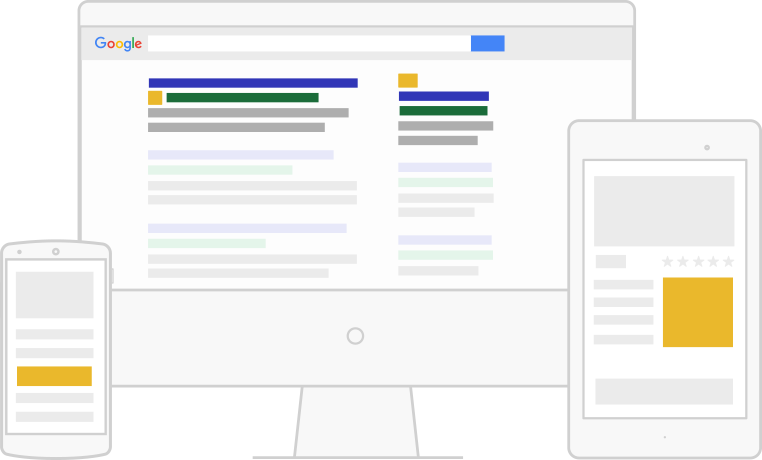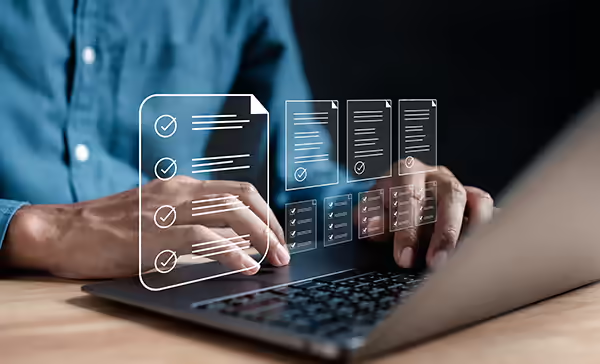Google has announced an array of new features for Google AdWords, most notably a new feature called Customer Match, allowing advertisers to upload email lists and design targeted adverts for specific audiences on the Google network.
Google ads and commerce head, Sridhar Ramaswamy, has written a post over on the AdWords blog, detailing his announcements of these new features. Google has also announced an expansion of the Similar Audiences, and new Universal App Campaigns. These new features should be rolling out globally across the next few weeks.

What is Customer Match in Google AdWords?
Customer Match is a new product which helps you reach the highest-value customers across Google products. Advertisers can upload existing email lists, and create ads which are specifically targeted to reach your audience across the Google platform.
These can be shown across search results, YouTube Trueview ads, and Gmail ads. Uploading the email lists can be done manually, or through the API to AdWords itself.
The Customer Match feature works by matching the email addresses against Google sign-in emails, with individual addresses being anonymized to address privacy concerns.
Whilst this means you won’t be able to generate personalised profiles of particular individuals, it does mean you can generate lists of customer habits, such as their search history or watched videos, which can be used to target ads with.
What can Customer Match achieve?
Essentially, this allows advertisers to set bids and create ads specifically geared towards predetermined audiences built from existing email lists. This allows for more useful and powerful advertising, as you can appeal directly to your audience, rather than basing advertising purely on site visitor behaviour.
As Sridhar has written:
70% of online consumers agree that the quality, timing, and relevance of a brand’s message influences their perception of a brand.
As an example – if a customer shops with you, you will then be able to upload the email address to Customer Match, and serve advertisements across search, YouTube, or Gmail for related products, when that customer is signed in with their Google account.
Here’s an example Google has given:
Let’s say you’re a travel brand. You can now reach people who have joined your rewards program as they plan their next trip. For example, when these rewards members search for “non-stop flights to new york” on Google.com, you can show relevant ads at the top of their search results on any device right when they’re looking to fly to New York. And when those members are watching their favorite videos on YouTube or catching up on Gmail, you can show ads that inspire them to plan their next trip.
With customer data, you can incorporate customer insight into the marketing process, with knowledge of the brand’s interactions with each individual on and offline. You can use newsletter subscribers, recent shoppers, loyalty scheme customers, or any other list, and tailor ads to these audiences.
You can understand which customers will purchase products online, or may wish to buy offline. With data of each customer’s location, it will result in a huge step forward in personalisation that Google has not offered before.
Alongside this, it will also let you create an audience profile based on your customers’ interests and habits, which can then help target new customers on Google services.
Why is Google introducing Customer Match now?
On the AdWords blog, Sridhar Ramaswamy outlined how mobile has changed the game for consumers and brands, explaining that:
Consumer expectations for immediacy and relevance are higher than ever, and successful brands are those that connect with people in the moments that matter most to them — the I-want-to-know, I-want-to-go, I-want-to-do, and I-want-to-buy moments. Google is a company built on meeting people’s needs in the moment. Through our ads innovations, we’ve brought that ability to businesses large and small.
Before this, the closest comparable feature was serving ads to site visitors with display ads based upon retargeting lists, which are captured through Google Analytics. Retargeting Lists for Search Ads also allows advertisers to provide tailored ads to particular audiences, with the lists being built with cookies.
Google is also introducing this feature due to the fact Facebook and Twitter offer Custom Audiences and Tailored Audiences, respectively. These two social networks have seen great success, and so it makes sense for Google to do the same. Google has called Customer Match a “privacy-safe” product, but it is likely to still raise some eyebrows with the public.
Similar Audiences
Alongside this new feature, Google is expanding Similar Audiences. Similar Audiences has already existed for retargeting lists on the Display Network, which builds lists based upon browsing activities on websites within the Display Network itself. This, combined with contextual signals from users in the lists can help find new users and expand the advertising reach to those with similar characteristics or interests.
Now, you can generate Similar Audiences using Customer Match, to reach new customers who are more likely to be interested in your products or services.
An example from Google for a travel company:
You can drive awareness on YouTube for new non-stop flights by showing TrueView ads to prospective customers who have similar interests and characteristics to your rewards members.
Being able to find new customers based upon the activity of existing CRM customers or users could prove to be a very valuable asset in finding new users, with targeted ads that are more likely to result in conversions.
Universal App Campaigns Roll-Out
Alongside this new update, Google is also rolling out Universal App Campaigns across the globe. This allows app developers and marketers to reach users in search results, on the Google Display Network, YouTube, and the in-app advertising network known as AdMob.

Ad bids work on a cost-per-install targets, which is set by app marketers. That is all the information Google will require, and they do the rest to scale your reach and maximise installs. Google will pull all the imagery, videos, and descriptions necessary from the Google Play listing, allowing advertisers to enter four lines of copy which can be used in different formats across the advertising network. You can also choose the budget, location, and language targets.
Additionally, Google will optimise your campaigns using dynamic learning, to maximise the installs at your target cost, by testing different versions of ad text and app images in different Google networks.
Another example from Google:
Let’s say you’ve built an adventure game. With Universal App Campaigns, you have unparalleled reach: you can drive installs on YouTube, the platform with 1B+ users who watch hundreds of millions of hours of content everyday. Your ads can also reach specific audiences across 650K apps and 2M+ websites in the GDN. And importantly, Universal App Campaigns tap into intent-rich searches like “adventure games” and “puzzle games” that are happening throughout the day on Google Search and Google Play so your app can be seen when people are looking to download something new.
This comes after advertising spend on promoting app installs is expected to hit $3 billion this year, which is double from last year.
If you’re interested in expanding your online reach, and would like to enhance your advertising through Google AdWords, get in touch with the team here at Xanthos.
We have extensive experience in using Google AdWords, with recent successes including a 147% increase in conversions for AdWords, whilst reducing the overall cost.












